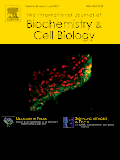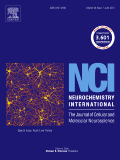
Redox Biology
Scope & Guideline
Advancing Knowledge on Reactive Species and Their Impact on Health
Introduction
Aims and Scopes
- Redox Mechanisms in Health and Disease:
The journal explores how redox processes influence health and disease, including the role of oxidative stress in chronic diseases such as cancer, cardiovascular diseases, and neurodegenerative disorders. - Antioxidant Defense Systems:
Research published in Redox Biology frequently addresses the mechanisms and efficacy of various antioxidant systems, including enzymatic and non-enzymatic antioxidants, and their therapeutic implications in managing oxidative stress-related diseases. - Ferroptosis and Regulated Cell Death:
A significant focus is on ferroptosis and other forms of regulated cell death, examining their mechanisms, implications in various diseases, and potential as therapeutic targets. - Mitochondrial Function and Redox Signaling:
The journal highlights the relationship between mitochondrial function, bioenergetics, and redox signaling, investigating how mitochondrial dynamics and redox states affect cellular health and disease outcomes. - Nutritional and Environmental Influences on Redox Biology:
Research often examines how dietary components, environmental factors, and metabolic pathways modulate redox states and influence disease susceptibility and progression. - Innovative Therapeutic Strategies:
The journal publishes studies on novel therapeutic strategies targeting redox pathways, including the development of redox-modulating agents and their application in clinical settings.
Trending and Emerging
- Redox Modulation in Cancer Therapy:
There is a growing focus on how redox modulation can be leveraged in cancer therapy, particularly in the context of ferroptosis and other regulated cell death pathways, indicating a shift towards therapeutic applications. - Interplay Between Gut Microbiota and Redox Biology:
Emerging research highlights the interactions between gut microbiota and redox biology, investigating how microbial metabolites influence redox states and impact health and disease. - Redox Biology and Aging:
The relationship between redox processes and aging is gaining traction, with studies exploring how redox dysregulation contributes to age-related diseases and potential interventions to mitigate these effects. - Environmental Impacts on Redox States:
Research is increasingly addressing how environmental factors, including pollution and diet, affect redox homeostasis and contribute to disease pathology, particularly in the context of climate change and public health. - Systems Biology Approaches to Redox Regulation:
There is a trend towards employing systems biology approaches to understand the complex networks of redox regulation, integrating data across multiple biological scales and disciplines.
Declining or Waning
- Traditional Antioxidant Therapies:
Research focusing on traditional antioxidant therapies has seen a decline as new strategies and approaches to modulate redox biology emerge, emphasizing the need for more targeted and mechanism-based interventions. - Basic Redox Biochemistry Studies:
There has been a noticeable waning of publications centered solely on basic redox biochemistry, as the field increasingly emphasizes translational research and the application of redox biology in clinical contexts. - Static Models of Oxidative Stress:
Studies relying on static models of oxidative stress without consideration of dynamic biological systems have become less frequent, as researchers seek more complex and realistic models to study redox biology. - Single-Parameter Redox Measurements:
Research that focuses on single-parameter measurements of redox states is declining in favor of multi-parameter approaches that provide a more comprehensive understanding of redox dynamics in biological systems.
Similar Journals

INTERNATIONAL JOURNAL OF BIOCHEMISTRY & CELL BIOLOGY
Unlocking the Secrets of Life at the Cellular LevelThe International Journal of Biochemistry & Cell Biology, published by Pergamon-Elsevier Science Ltd, stands as a pivotal resource in the fields of biochemistry and cell biology. With an ISSN of 1357-2725 and an E-ISSN of 1878-5875, this prestigious journal has been a key platform for disseminating cutting-edge research since its inception in 1995. The journal currently holds an impressive Q1 ranking in Biochemistry and a Q2 ranking in Cell Biology for the year 2023, reflecting its commitment to high-quality research and its influence within the scientific community. With a significant Scopus ranking of 94/438 in Biochemistry and 96/285 in Cell Biology, the journal plays a crucial role in advancing knowledge and fostering innovative approaches in these dynamic fields. Though it is not an open-access journal, the International Journal of Biochemistry & Cell Biology remains accessible to a wide audience, making it a vital resource for researchers, professionals, and students alike, who are eager to explore and contribute to the ongoing advancements in biochemistry and cell biology.

FREE RADICAL BIOLOGY AND MEDICINE
Leading the Charge in Free Radical Research since 1987FREE RADICAL BIOLOGY AND MEDICINE, published by Elsevier Science Inc, is a premier journal dedicated to the field of biochemistry and medical physiology. With an ISSN of 0891-5849 and an E-ISSN of 1873-4596, this journal stands out with its impressive ranking in the 2023 category quartiles: Q1 in Biochemistry and Q1 in Physiology (medical). Specifically, it has achieved a remarkable position of 29th out of 438 in Biochemistry and 8th out of 113 in Physiology, placing it firmly in the 93rd percentile of its field, as per Scopus rankings. Since its inception in 1987, the journal has focused on advancing the understanding of free radicals and their role in biological processes, encompassing a wide range of topics from oxidative stress to therapeutic applications. Although it does not currently offer open access, the journal's rigorous peer-review process and impactful research ensure that it remains a valuable resource for researchers and professionals seeking to explore the intricate relationships between free radicals and health. The journal's headquarters are located at STE 800, 230 Park Ave, New York, NY 10169, reflecting its esteemed place within the scientific community and commitment to high-quality research.

JOURNAL OF BIOENERGETICS AND BIOMEMBRANES
Illuminating the Pathways of Cellular EnergyJOURNAL OF BIOENERGETICS AND BIOMEMBRANES, published by SPRINGER/PLENUM PUBLISHERS, is a leading journal dedicated to the study of bioenergetics and biomembranes, covering essential topics such as cellular energy transformation and membrane dynamics. Since its inception in 1976, the journal has developed a robust reputation within the scientific community, currently holding a Q3 ranking in Cell Biology and a Q2 ranking in Physiology for 2023. Boasting a prestigious Scopus Rank in both Biochemistry and Physiology, it serves as a crucial platform for disseminating pioneering research findings. With its commitment to quality and innovation, the journal plays a significant role in advancing our understanding of the fundamental processes that underlie life at the cellular level. Although it does not offer open access options, the journal remains accessible through universities and research institutions, ensuring that vital research is widely shared among scholars, professionals, and students alike. The JOURNAL OF BIOENERGETICS AND BIOMEMBRANES is essential for anyone seeking to contribute to or stay informed about developments in this dynamic field.

BIOCHIMICA ET BIOPHYSICA ACTA-BIOENERGETICS
Innovative Research at the Intersection of Life SciencesBIOCHIMICA ET BIOPHYSICA ACTA-BIOENERGETICS is a prestigious journal published by Elsevier, dedicated to advancing the fields of biochemistry, biophysics, and cell biology. Established in 1967, this journal is committed to disseminating high-quality research that unveils the molecular mechanisms of bioenergetics, encompassing a wide range of topics from mitochondrial function to energy metabolism. With an exceptional impact factor and a current ranking in the Q1 quartile across multiple categories—specifically ranked #13 in Biophysics and featuring strong positions in Biochemistry and Cell Biology—this journal is recognized for its influential contributions to the scientific community. Scholars, researchers, and students globally benefit from its rigorous peer-review process and access options, although it is not currently open access. By providing a platform for innovative research, BIOCHIMICA ET BIOPHYSICA ACTA-BIOENERGETICS plays a critical role in fostering scientific advancement and collaboration among professionals in the field.

JOURNAL OF PHYSIOLOGY AND BIOCHEMISTRY
Empowering Scholars to Shape the Future of Health SciencesJOURNAL OF PHYSIOLOGY AND BIOCHEMISTRY, published by Springer in the Netherlands, serves as a pivotal platform for disseminating high-quality research within the fields of physiology, biochemistry, and related biomedical sciences. With an impressive impact factor reflected in its categorization as Q2 in Biochemistry and Q1 in Medicine (miscellaneous), this journal fosters a vibrant community of scholars dedicated to advancing knowledge and innovation. The journal’s broad scope encompasses a wide range of topics from cellular mechanisms to systemic physiology, making it relevant for both theoretical and applied sciences. Researchers and practitioners are encouraged to utilize the available Open Access options to reach a wider audience. The journal’s continuous contribution to the scientific dialogue since its inception in 1996 positions it as a key resource for professionals and students alike, facilitating the exploration of cutting-edge topics and collaborative research opportunities.

JOURNAL OF TRACE ELEMENTS IN MEDICINE AND BIOLOGY
Exploring the Essential Connections Between Trace Elements and HealthThe JOURNAL OF TRACE ELEMENTS IN MEDICINE AND BIOLOGY, published by Elsevier GmbH, stands as a leading platform for disseminating pivotal research in the interdisciplinary field that bridges biochemistry, inorganic chemistry, and molecular medicine. With an impact factor reflective of its high-quality submissions and significant contribution to the scientific community, this journal currently holds a Q2 ranking in Biochemistry and a Q1 ranking in Inorganic Chemistry, underlining its esteemed status among peers. Since its inception in 1995 and continuing through to 2024, the journal has fostered a dynamic discourse on the fundamental roles of trace elements in biological systems, incorporating studies that range from their biochemical functions to their impact on health and disease. Researchers, professionals, and students alike can access a wealth of knowledge, missing Open Access options notwithstanding, making it indispensable for those at the forefront of scientific investigation in medicine and biology.

Aging-US
Unveiling the Mysteries of Longevity and HealthAging-US is a premier peer-reviewed journal dedicated to advancing the field of aging research and cell biology. Published by IMPACT JOURNALS LLC, this journal serves as a vital resource for researchers and professionals exploring the biological mechanisms of aging and their implications for health and disease. With a commendable impact factor reflected in its 2023 Scopus rankings, where it stands at Rank #10/38 in the category of Aging and Rank #63/285 in Cell Biology, Aging-US exemplifies rigorous scientific excellence. Its open access policy enhances accessibility, fostering a wider dissemination of knowledge in both academic and clinical settings. Spanning from 2009 to 2024, the journal provides a platform for groundbreaking studies and innovative methodologies, ensuring that it remains at the forefront of the dynamic conversations surrounding aging and cellular biology. Engage with Aging-US to contribute to the evolving narratives of longevity and cellular health.

CELL BIOLOGY INTERNATIONAL
Elevating the Discourse in Cellular ResearchCELL BIOLOGY INTERNATIONAL is a prestigious academic journal dedicated to the rapidly evolving field of cell biology, publishing high-quality research aimed at understanding cellular processes and their implications in various biological contexts. Published by Wiley, this journal has established its relevance with an H-Index that reflects its robust citation impact and a commendable Scopus Rank of #111 out of 285 in the field of Biochemistry, Genetics, and Molecular Biology, positioning it in the 61st percentile. Although it operates under a traditional subscription model, its influential insights are crucial for researchers, professionals, and students alike who are seeking cutting-edge developments in cellular mechanisms and their applications in medicine. The journal spans contributions dating back to 1993, providing a rich archive of knowledge that continues to shape the discourse within the scientific community. With a strong category ranking of Q3 in Cell Biology and Q2 in Medicine (miscellaneous) as of 2023, CELL BIOLOGY INTERNATIONAL stands as a reliable platform for disseminating transformative science in the cellular domain.

NEUROCHEMISTRY INTERNATIONAL
Exploring the Intersection of Biology and ChemistryNEUROCHEMISTRY INTERNATIONAL, published by Pergamon-Elsevier Science Ltd, offers a premier platform for researchers and professionals in the realms of cell biology and cellular and molecular neuroscience. Established in 1980 and continuing its passion for advancing the field, this esteemed journal enhances scientific collaboration with a notable 2023 Q2 ranking in both relevant categories, placing it among the top-tier publications in its discipline with a Scopus rank of 23/97 for Cellular and Molecular Neuroscience. With its focus on groundbreaking research, the journal provides a wealth of vital data and insights that drive forward our understanding of neurochemistry and its implications in health and disease. While not an Open Access journal, NEUROCHEMISTRY INTERNATIONAL is integral for professionals, academics, and students aiming to stay at the forefront of neurobiological research innovations, making significant contributions to both academia and clinical applications.

REDOX REPORT
Showcasing Cutting-Edge Advances in Redox ScienceREDOX REPORT is a peer-reviewed academic journal published by Taylor & Francis Ltd, focusing on the latest advancements in the fields of biochemistry, clinical biochemistry, and physiology. Since its inception in 1996 and transitioning to an Open Access model in 2018, this journal has aimed to disseminate high-quality research findings and foster discussions within the scientific community. Positioned in the Q2 quartile across several relevant categories, including Biochemistry, Cell Biology, and Clinical Biochemistry, REDOX REPORT is recognized for its commitment to impactful research. The journal plays a crucial role in bridging the gap between fundamental biochemical research and its clinical applications, making it an essential resource for researchers, professionals, and students alike. With a consistent publication record extending to 2024, REDOX REPORT is dedicated to featuring cutting-edge studies that advance our understanding of redox biology, thereby contributing significantly to the ongoing dialogue in the life sciences.